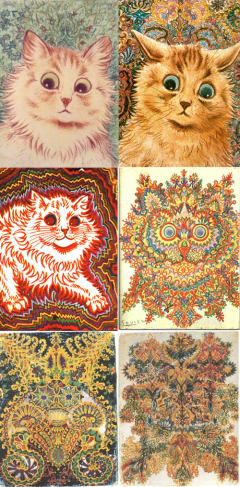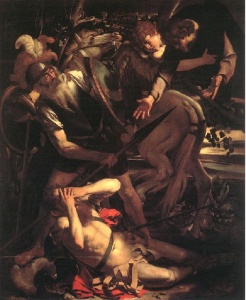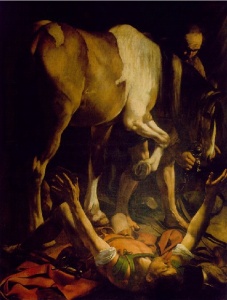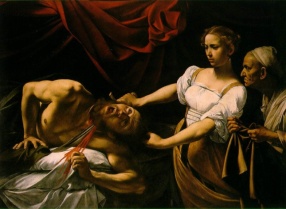Louis Wain
While he became increasingly delude, his erratic mood swings subsided, and he continued drawing for pleasure. His work from this period is marked by bright colours, flowers, and intricate and abstract patterns, though his primary subject remains the same.
Series of his paintings are commonly used as examples in psychology textbooks to putatively show the change in his style as his psychological condition deteriorated. However, it is not known if these works were created in the order usually presented, as Wain did not date them. Rodney Dale, author of Louis Wain: The Man Who Drew Cats, has criticised the belief that the paintings can be used as an example of Wain’s deteriorating mental health, writing: “Wain experimented with patterns and cats, and even quite late in life was still producing conventional cat pictures, perhaps 10 years after his [supposedly] ‘later’ productions which are patterns rather than cats.”[11]
In 2012 however, Dr. Kevin Van Eeckelen proposed an article about psychotic patterns that already appear in Louis Wain’s earlier (narrative) work, for instance in his Louis Wain Kitten Book (1903). This analysis is based on the mimetic (girardian) view on psychosis, which focuses on the continuity between ‘normality’ and ‘madness’. [12]
Based on psychiatrist Dr David O’Flynn 1930s experiments with art and mescaline-induced psychosis – that the creative ability of people with schizophrenia deteriorated. But the experience of outsider art is that this is not true. Looking at Wain’s late work, O’Flynn sees a greater experimentation and use of colour – but not deterioration. Despite the series being known to be assembled, and the pictures not dated since the 1960s, “their representation of something that doesn’t exist, namely psychotic deterioration, has been surprisingly robust”.
Michelangelo Merisi da Caravaggio
During my research I found an article which says that Michelangelo was a Schizophrenic. Caravaggio has long enjoyed a reputation as an anti-social and tempestuous individual. The following argues that Caravaggio was in fact suffering from this disease.
Following Wilhelm Reich’s, schizophrenic symptoms and delusions are the result of the projection of objective physiological processes occurring in discrete organs of the body, or at least body-systems, it interprets the changing nature of Caravaggio’s paintings as reflecting his own suffering in the eyes and throat.
“It is very difficult to formulate in words an experience in which a process in the organism is perceived and yet is not perceived as one’s own. But there can be no doubt whatsoever that this is exactly the key to understanding the schizophrenic split and the projection of bodily sensations” (Wilhelm Reich, 1945)
“Delusions are typically persecutory or grandiose, or both…features include anxiety, anger, aloofness, and argumentativeness…a superior and patronizing manner and either a stilted, formal quality or extreme intensity in interpersonal interactions. The persecutory themes may predispose the individual to suicidal behaviour, and the combination of persecutory and grandiose delusions with anger may predispose the individual to violence” (DSM, IV, 313-14). A review of eight major studies conducted in the US concluded that five to ten per cent of schizophrenics commit acts of serious violence per year. The same study concluded that schizophrenics account for about ten per cent of all homicides in Europe (Torrey, 2006).
Wilhelm Reich, in his unjustly neglected writing, “The Schizophrenic Split” (published in 1945, as chapter 15 of Character Analysis) noted the centrality of both the throat and the eyes in the schizophrenic experience, and, quite crucially, the role that they play in schizophrenic self-harm and harm to others.
“I suddenly understood with perfect clarity why and in what emotional situations murders are committed by schizophrenics…when the tension in the organs, especially in the diaphragmatic region and in the throat, becomes unbearably strong, the urge appears to cut one’s own stomach or throat…The murder occurs when the impulse is directed away from oneself towards something else” (Reich, 1945: 423-24).
Caravaggio’s depiction of suffering is secular, brutally physical and not about the overcoming of fear and the embrace of death to the glory of god. Souls are not waiting to be born to heaven by a host of angels and the community of saints. This is violence directed to discrete parts of the body. The religious and transcendent content is minimal
“More than a third of the paintings attributed to him depict scenes of violence with decapitation the clear favourite among them” (Varriano, 2006:73)
Decapitation, as represented in several of his paintings, in the classical Freudian sense, is indicative of a fear of castration, and Caravaggio duly obliges, adorning the neck with snakes. Caravaggio’s Schizophrenic terror was decapitation. That is clear also in the ‘modern’ Schizophrenics.
“That hospitalization marked the first time I had ever admitted to anyone what was happening inside my head: for years I had witnessed my own decapitation” (anonymous, 1992)
In conclusion, in this article they describe schizophrenic people as violent and harmful. But are they really the aggressor? Or are they just one more victim of these society who discriminates everything that is different from the ‘normal standards’.




